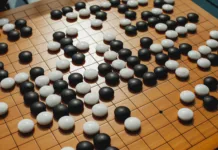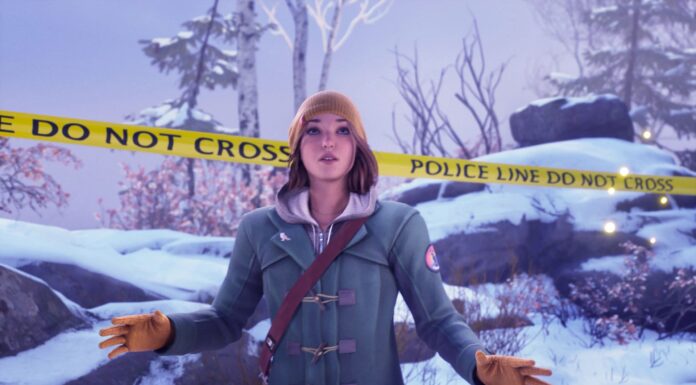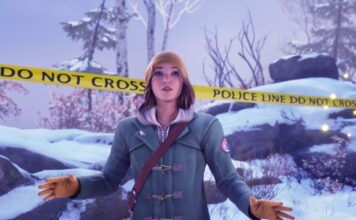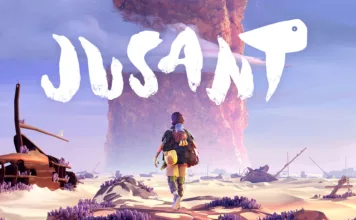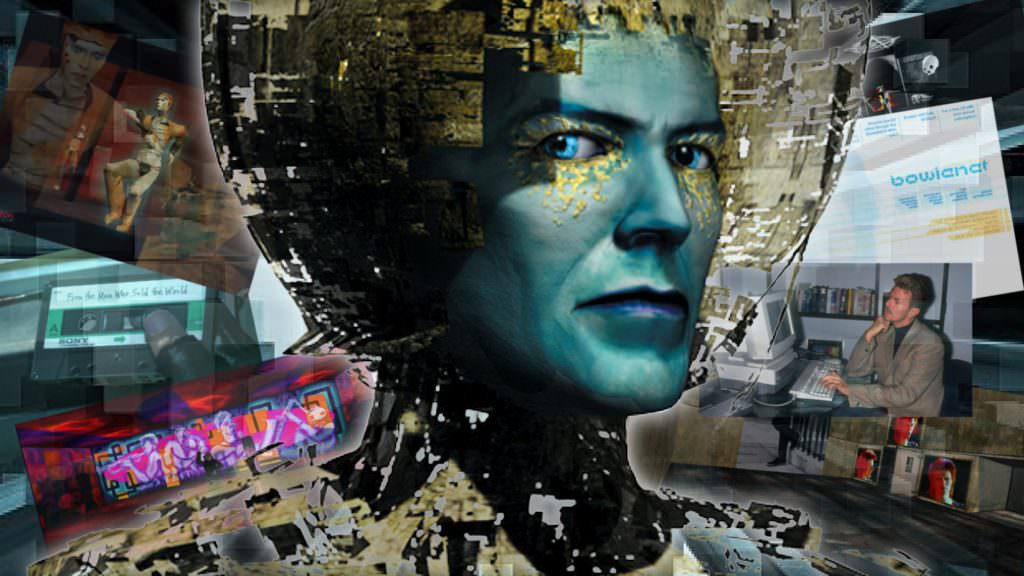
 Bowie and his influence is only something we can fully grasp with hindsight, and we find it in the most unexpected places.
Bowie and his influence is only something we can fully grasp with hindsight, and we find it in the most unexpected places.
We’ve all been going through David Bowie’s back catalogue since his sudden, but perfectly artistic departure. We got one final image of him in a hospital bed singing his farewells before he disappeared. Most who hadn’t done so already have come to realise that he was a truly inspired, forward-looking man whose influence is felt far and wide across multiple mediums. He could ensnare you with stories from his multi-faced career and probably recite the entire history of art with starry-eyed prophecy and vision for the future, and you’d damn well listen.
While some of his lesser-known passions such as the occult have already been talked to death by writers and bloggers since the release of Black Star, his hype and excitement for the internet back in the late 90s is under spoken.
As ever, he was ahead of his time and truly visionary as to the impact the internet would have on culture. He foresaw how the internet would break down barriers between creators and their audiences, and how people’s reaction to art and the whole event of a new piece of work coming out would be much more important than ever before in history. A glorious “grey space” where the lines between artist, audience and their interpretations are blurred and discussion reigns.
Bowie took part in both sides, not only putting out his work but talking about it and the work of others as a fan too. Typically he would lurk in some obscure places despite being incredibly recognisable, popping up where you least expect him. His love affair with the internet and virtual reality was given a digital blue face by a little-known game called Omikron: The Nomad Soul.
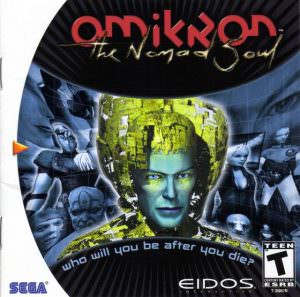 Quantic Dream’s first foray into game development, Omikron was a 3D adventure game with fighting and shooting segments, and an open world map. It was developed for Windows and the Dreamcast, which it owes for its poor sales and obscurity.
Quantic Dream’s first foray into game development, Omikron was a 3D adventure game with fighting and shooting segments, and an open world map. It was developed for Windows and the Dreamcast, which it owes for its poor sales and obscurity.
It had aliens, demons, parallel dimensions and all sorts of high strangeness coursing throughout its narrative, which probably made it, even more, difficult to sell. A hodge-podge of ideas, often times clumsily stumbled into and insubstantial in execution, it was definitely a David Cage game. Most famous for Heavy Rain, Cage is certainly an artist in his own right. Maybe all of his games will get more appreciation in years to come, because looking back at this one, it was certainly interesting to say the least.
Back when the future was all chrome and looked like a rave; Omikron is set in a parallel universe and immediately gets postmodern by having you, the player, act as “the nomad soul” by occasionally hopping between bodies to controls them. While it begins as a murder mystery, as the story twists and turns you uncover the shadowy plot of the demon Astaroth who’s out to harvest souls to escape his dimensional prison and destroy the multiverse. No really, it’s that weird. The game actually creates an incredibly unnerving atmosphere, often directly addressing and threatening the player. For all it’s faults, it was inspired and groundbreaking, and has more style than anything that followed.
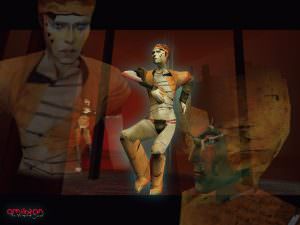 If you watched that above clip through to the fighting segment, you surely recognised the distorted voice of Bowie on the soundtrack. Not only did he provide 10 original songs (some of which reappeared on Hours… and as b-sides on the singles), he also played two in-game characters as voice, face and body; an electric, computer-based consciousness called Boz, and the singer of “The Dreamers”; a guerilla rock band shouting back at their dystopian government. For the latter part, they actually suited him up in a mo-cap suit (remember, this is still the 90s) so they could really nail his stage mannerisms….onto a low-poly body that couldn’t articulate them….Still, you can tell Bowie is giving it his all in both roles.
If you watched that above clip through to the fighting segment, you surely recognised the distorted voice of Bowie on the soundtrack. Not only did he provide 10 original songs (some of which reappeared on Hours… and as b-sides on the singles), he also played two in-game characters as voice, face and body; an electric, computer-based consciousness called Boz, and the singer of “The Dreamers”; a guerilla rock band shouting back at their dystopian government. For the latter part, they actually suited him up in a mo-cap suit (remember, this is still the 90s) so they could really nail his stage mannerisms….onto a low-poly body that couldn’t articulate them….Still, you can tell Bowie is giving it his all in both roles.
Cage first conceived the story back in 1994 but only saw it come to life in 1999, having wowed Eidos with a self-funded demo just before his own company, Quantic Dream, was about to go into bankruptcy. He listed Bowie down as one of his dream-team for the soundtrack once it began production with no real hope that he’d actually get involved. But oh ye Cage of little faith; it was just the thing Bowie was deeply interested in at the time.
Multiple personalities? Sci-fi fantasy? Artsy French weirdness? Virtual reality and the internet? Digital alien consciousness? I think Bowie broke out the spaceship just to fly to the offices as fast as he could.
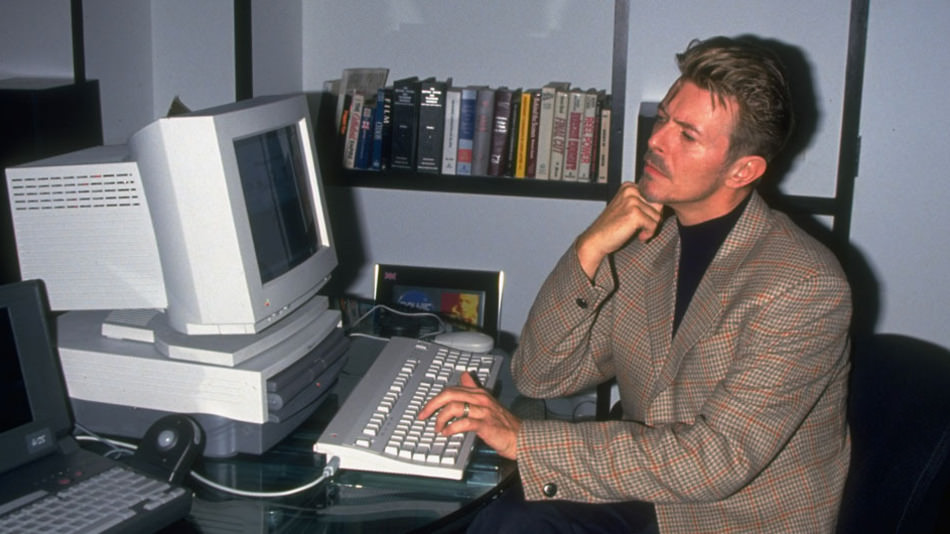
This was far from Bowie’s first journey into strange digital landscapes. As he said in the top interview and on Internet Tonight, he was a regular online lurker. You may have even talked to him without knowing. In 1996, he became the first major artist to use online distribution with Telling Lies and ran his own site, BowieNet, long before social media was even a concept in most minds.
He was so dedicated and awe-inspired with the potential of the internet that BowieNet was even expanded into a functional ISP, giving users their own e-mail address and server space to fill with their own content. He was truly committed to fuelling the creative fire and excited to explore the “grey space” between artists and their audiences that the advent of the internet created.
of the internet that BowieNet was even expanded into a functional ISP, giving users their own e-mail address and server space to fill with their own content. He was truly committed to fuelling the creative fire and excited to explore the “grey space” between artists and their audiences that the advent of the internet created.
Sadly, his habit of being ahead of his times didn’t do him any favours with BowieNet and the fire burned out. Broadband was yet to arrive and the internet wasn’t to become as ubiquitous as it is now for another decade or so, something that killed the Dreamcast and Omikron with it. Keep in mind, this is a time before Google was of much use, and decent media players existed. But even in that pre-broadband world, another set of forward thinkers limited by the times tried their hand at creating a new reality. And they had connections to Bowie too.
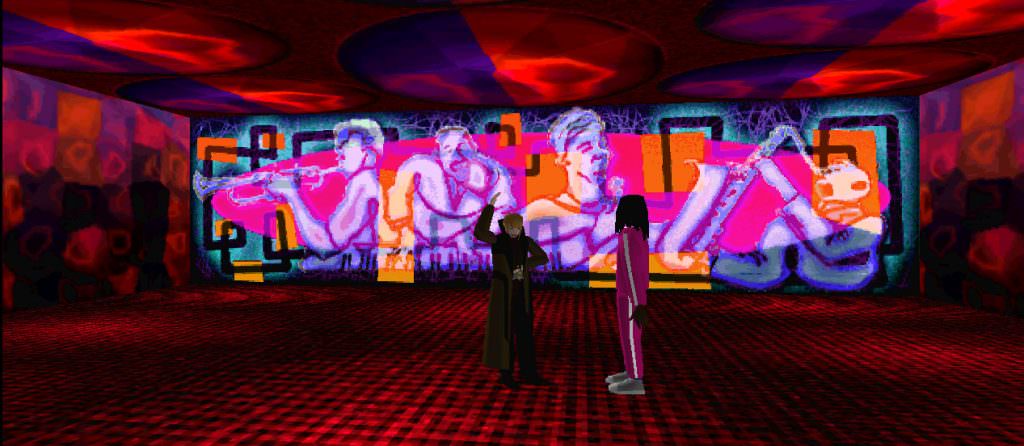
Worlds Chat, more commonly known as just Worlds, was the precursor to SecondLife and was launched over twenty years ago in 1995. Its current incarnation remains unchanged since 1998 and doesn’t look much different from the original version. Remarkably, it’s still online and almost fully functional, though most external links (which are embedded in the game-world as clickable posters) lead to 404 pages. You can download and play for free here.
I first heard about it on 4chan’s /x/ board a few years ago when some Anon stumbled across it and was captivated by it’s primitive eeriness. This lead to an influx of new members, myself included, onto an otherwise dead service for the purpose of exploration. To which the original community who eventually noticed responded to by deleting all the BDSM and kinky roleplay rooms…..but I saw, Worlds. I saw…
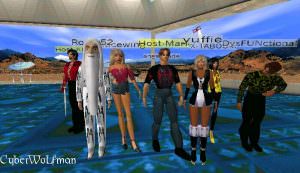 Originally acting as an online virtual reality for users to socialise and chat on, it’s current ghost town state and severely limited technological capabilities create the same foreboding atmosphere as LSD: Dream Emulator or Yume Nikki. In the right mindset, you’ll find yourself wandering around virtual graveyards that are too quiet for comfort, wondering if anyone is watching you and what they might want. However, it also serves as a time capsule to a bygone era that was simultaneously thrilled for the millennium and fearful of Y2K.
Originally acting as an online virtual reality for users to socialise and chat on, it’s current ghost town state and severely limited technological capabilities create the same foreboding atmosphere as LSD: Dream Emulator or Yume Nikki. In the right mindset, you’ll find yourself wandering around virtual graveyards that are too quiet for comfort, wondering if anyone is watching you and what they might want. However, it also serves as a time capsule to a bygone era that was simultaneously thrilled for the millennium and fearful of Y2K.
The various “worlds” in Worlds are made by the community, either for themselves or for external clients dipping their toe into the murky water of dial-up internet. Among the listed clients is Bowie himself. Because, yes, there is a “Bowie World”. Right next to the “Britney Spears World” and the “Hanson World”.
“Bowie World” is, omitting some of the unlisted “worlds”, the creepiest place you’ll find there. I revisited it before writing to see if I could find a trace of the man himself that he might have left behind in the BowieNet days.
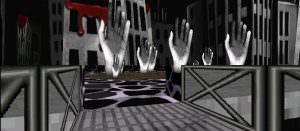 Upon entry, a view from the lobby window treats you to a German expressionist nightmare, complete with crooked skyscrapers oozing blood and giant dismembered hands planted in the soil of the courtyard below. While there I saw a single user, just standing, staring out the window, not moving or speaking a word. The surviving community of this site is a scary story for another time, but suffice to say that it’s hard to tell which is more unsettling in Worlds; being utterly alone or not being alone enough.
Upon entry, a view from the lobby window treats you to a German expressionist nightmare, complete with crooked skyscrapers oozing blood and giant dismembered hands planted in the soil of the courtyard below. While there I saw a single user, just standing, staring out the window, not moving or speaking a word. The surviving community of this site is a scary story for another time, but suffice to say that it’s hard to tell which is more unsettling in Worlds; being utterly alone or not being alone enough.
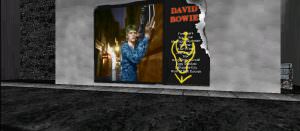 Exploring further into the streets below, all of which look like a mugger’s paradise, faded Bowie posters is all there is to break up the oppressive concrete walls. Before visiting “Bowie World”, the concept of .gif brutalism wasn’t even something, I’d dreamed about. By the time I left, I never wanted to see it again, even if I couldn’t stop wondering what it was all supposed to mean.
Exploring further into the streets below, all of which look like a mugger’s paradise, faded Bowie posters is all there is to break up the oppressive concrete walls. Before visiting “Bowie World”, the concept of .gif brutalism wasn’t even something, I’d dreamed about. By the time I left, I never wanted to see it again, even if I couldn’t stop wondering what it was all supposed to mean.
Teleporting out of there, I ended up in a comparatively peaceful an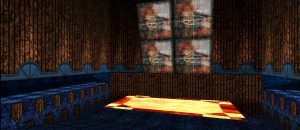 d airy courtyard in front of a lovely church. But even that got weird and unsettling when I went inside and found a giant floating statue of a devil where the altar should be. In the basement lay a sadly empty stage that I can only assume was built for Bowie to perform on himself. I wouldn’t be surprised if he did at some point, but the original Worlds community is as silent as ever about the matter.
d airy courtyard in front of a lovely church. But even that got weird and unsettling when I went inside and found a giant floating statue of a devil where the altar should be. In the basement lay a sadly empty stage that I can only assume was built for Bowie to perform on himself. I wouldn’t be surprised if he did at some point, but the original Worlds community is as silent as ever about the matter.
Beyond the stage, there lay the traces of Bowie’s and Universal’s earl y attempts at using the internet as a distribution platform; a shop whose walls you could click to link you to dead store pages for merch and CDs. It’s a shame the whole internet didn’t become like Johnny Mnemonic. Things like SecondLife, Playstation Home and various Oculus Rift experiments prove we can’t put the idea down. Walking around cyberspace is fun in a way that a normal HTML page can’t be. The weird clash of video game and web browser/chatroom is something we’ve yet to get over, but kudos to Worlds for being the first to try to make it a reality.
y attempts at using the internet as a distribution platform; a shop whose walls you could click to link you to dead store pages for merch and CDs. It’s a shame the whole internet didn’t become like Johnny Mnemonic. Things like SecondLife, Playstation Home and various Oculus Rift experiments prove we can’t put the idea down. Walking around cyberspace is fun in a way that a normal HTML page can’t be. The weird clash of video game and web browser/chatroom is something we’ve yet to get over, but kudos to Worlds for being the first to try to make it a reality.
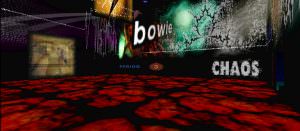
After an hour of wandering around “Bowie World” feeling like a character in a Jan Švankmajer or Brothers Quay film, my last stop was in the “chaos room”. Now, early web pages are renowned for being a graphic designer’s nightmare, but this was something else. If you ever thought the flashy bits of Hackers or early Prodigy videos were visual overloads, you’re not prepared for this feverish collection of strobing .gifs.
Amid all the visual pollution, understated and easy to miss, was a wall that flashed “BowieNet – click here”.
I did.
But because BowieNet is long since gone, it redirected to davidbowie.com.
It opened up a window small enough to just see this:

Even here, in a forgotten recess of the internet, Bowie’s creative DNA and his final farewell were there to be found. Even outside music, into a realm more familiar to gamers and internet trolls, he had an influence. Forget the fact he’s referenced in everything from Xenosaga to Metal Gear Solid when it comes down to the fundamental makeup of virtual realities like Worlds or every MMO that followed, he was ahead of the curve, dazzled with possibilities we’re still getting to grips with today.
I can’t say for sure if “Bowie World” was a work of his fans first and he became a client second, or if he asked them to do it personally, but I guess that’s part of the beautiful “grey space” he was on about before. At best, he answers questions with implications, leaving you bewildered enough to ask more questions or to interpret what it all meant.
Between BowieNet, Worlds and Omikron, without us, even knowing it yet Bowie characterised the decade we’re in now; a decade of connectedness, the “grey space” of art in the information age and virtual realities. It might take time before we really understand it all, though. I doubt he did.
For now, all we can really do is look and listen.

